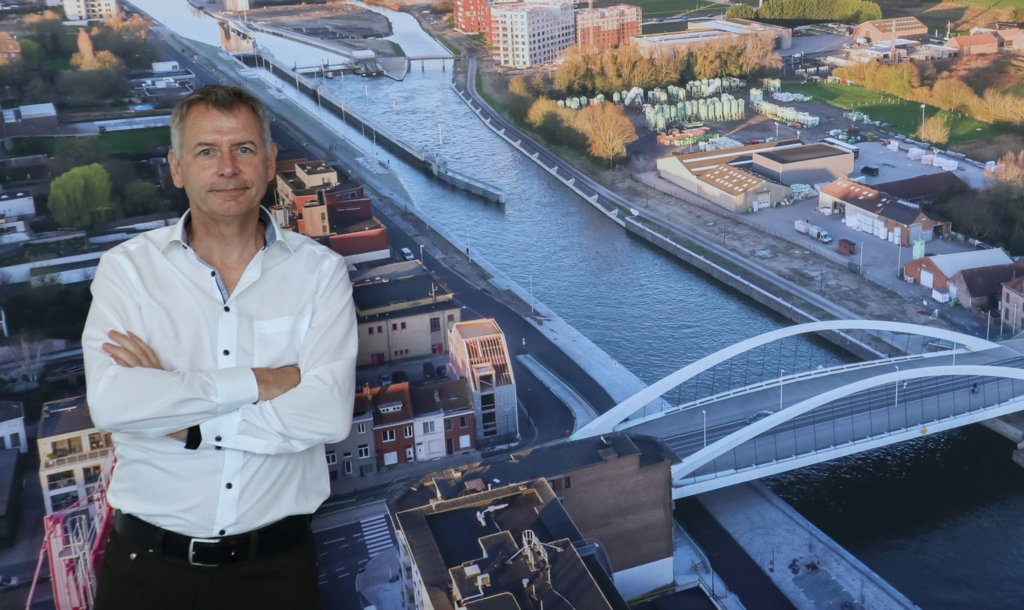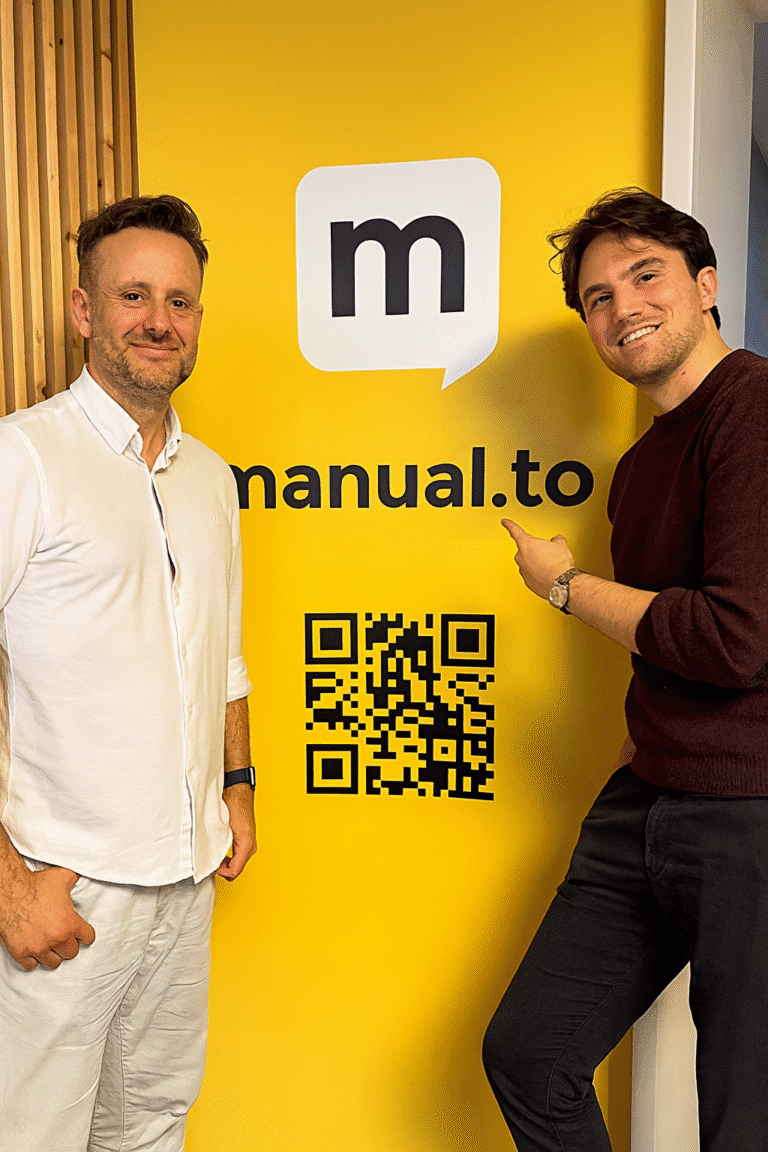Erik Schrooyen (De Vlaamse Waterweg): “Smart Shipping will define the future of inland navigation”

Smart Shipping – the automated or remotely controlled navigation of inland vessels – is considered very promising to address several challenges facing inland navigation. Flanders is a frontrunner in this field, thanks to adapted legislation. However, minds are also maturing in Wallonia and other countries. Erik Schrooyen, project manager for inland navigation innovation at Log!Ville partner De Vlaamse Waterweg, shares his insights with us.
Inland navigation is to play a bigger role in the greening and decarbonisation of freight mobility. To achieve modal shift – bringing new cargo flows to inland navigation – several challenges must be overcome. The shortage of inland skippers and crews is growing due to the work-life imbalance, the ageing population is hitting, and the fleet is largely obsolete. These challenges are a significant obstacle to strengthening the competitiveness of the inland navigation sector in the logistics chain. They are most acute for smaller vessels operating on smaller waterways.
“To meet these challenges, Smart Shipping – automated inland navigation – can play a pivotal role. As in the automotive sector, we distinguish five levels, with level 5 referring to fully autonomous shipping. We are still very far from that, not so much because of technology but because of regulations. That is why pilot projects aimed at remote controlling an inland vessel are particularly important to overcome the various bottlenecks,” says Erik Schrooyen.
From a distance
In Europe, Flanders leads the way in this respect. Article 70 of the Flemish Shipping Decree – which already entered into force in 2019 – empowers the waterway manager (De Vlaamse Waterweg) to grant permission for experiments with innovative and/or automated systems on vessels or on land. For these pilot projects, diversions are possible from police regulations, crew regulations, technical requirements, etc. They may proceed on the entire Flemish network (1,000 km of canals and waterways).
“Today there are three pilot projects ongoing (with nine vessels), two in application (with about six vessels) and two in the pipeline. Seafar technology is dominant in the current projects: operators monitor or control vessels remotely via a central control centre in Antwerp. This includes – roughly put – the use of real-time video images, radar data and other sensors to get a complete picture of the vessel’s environment,” he explains.
Already nine ships in ongoing projects
One of the three ongoing projects are the River Drone vessels (1 to 5) of shipowner Erik Verstraeten in collaboration with transport company Naval Inland Navigation. “They have been awarded to sail 24/7 with a reduced crew. Normally, there are five crew members on board, including two skippers. In this case, there is only one skipper on board. During one of the three daily shifts, Seafar takes over the steering,” adds Erik Schrooyen.
Ten River Drones are sailing today, but only five are already taking part in a pilot project. Applications are pending for the other five. “We first want to assess the feedback for the first five before scaling up further to ten. The fact that these are similar vessels makes the pilot project particularly interesting, as interactions, experiences and results can be compared in numerous circumstances.”
Another ongoing project is that of the Watertrucks, self-propelled barges up to 50 metres long that are very suitable for small watercourses. Three of them operate for ground carrier De Cloedt in the Westhoek, on the Plassendale-Nieuwpoort canal and on the Yser to Diksmuide. They are completely unmanned and remotely controlled by Seafar.
The third ongoing project is that of a fourth specimen – Watertruck XI – used to transport construction materials by the Celis group on the Leuven-Dijle canal. A unique feature of this project is that it eventually aims to carry out the five lock passages unmanned: the barge is then not fastened in the lock by people but is pushed against the wall by propulsion. This will be the case for two locks – hopefully soon. Authorisation has been sought for these. If permission is obtained, the other three will follow if the initial evaluations are positive.
“For now, this can only be considered on small canals whose locks only allow vessels to pass through one by one. In larger locks with multiple vessels, the current caused by propulsion could cause problems,” he explains.
Multiple applications
Flanders Waterway has received further applications. These include an application for five additional River Drones and one for the Tercofin 2, a diesel-electric barge owned by the Liège-based shipping company Novandi. This vessel will be remotely piloted with a limited crew: a mate and two sailors, but no skipper.
Two other applications are in the pipeline. A first is for the MV Walcheren. “That ship carries dangerous goods (ADN). That obviously makes it a bit more difficult to be remotely piloted, because of the higher safety requirements. We are looking at how we can make this possible”.
X-Barge (Start2Scaleup partner of Log!Ville, ed.) is also preparing an application for the Zulu’s. These are (semi)autonomous 85m-long electric barges with a hydrodynamic profile that would enter service from 2025.
Drawing lessons from five years’ experience
“We have now built up almost five years of experience with remote control of inland vessels. In Wallonia and abroad, they are not so far advanced. That is why the Smart Shipping Conference as part of the Belgian EU Presidency in May attracted a lot of interest,” Erik Schrooyen adds.
In Wallonia, a decree was recently voted that allows pilot projects to finally start. In the Netherlands, tests are possible, but crew reduction is not yet allowed. That makes it financially more difficult (ROI) to invest in the necessary technology. In France and Germany, tests are limited to a few local trials, although they are catching up there.
Meanwhile, in Flanders, a lot of know-how has been gathered in five years and the technology used has been further developed and expanded. This comprises autonomous control systems using sensors, algorithms, and artificial intelligence; systems for real-time exchange of data and images between the vessel and the operator; reliable communication networks; various sensors and navigation aids; integrated safety systems and data analysis with machine learning, etc.
‘Track pilots’ and other technology
“For example, much has already been learned about the deployment of ‘track pilots’, an existing technology. This is a fully automated heading system that allows a ship to sail on a predetermined line (a ‘track’). Like an aircraft’s autopilot, it serves to support the skipper, but it can also assist the operator,” Erik Schrooyen explains.
“To remotely control a ship, cameras are crucial. These can rotate 360° and are equipped to work in infrared. One of course uses radar as well as LIDAR technology (to monitor from a short distance). Experience has also shown that sound is important for the operator. Micros were installed on him to make him ‘feel’ the ship better. Much was also learned in terms of connectivity, as communication with the operator should never be interrupted. A ship therefore has three antennas from three different providers on board,” he adds.
Technology for the near future
New technology is also on the way that will increase the efficiency and safety of (semi)autonomous cruising. One of these is ‘intention sharing’. Track piloted ships can share expected course and speed with nearby ships so skippers no longer need to ask other ships’ ‘intentions’. “But of course this information is also super helpful for the operator,” says Erik Schrooyen.
“We also expect a lot from developments in the field of so-called ‘haptic control’. Here, the operator receives not only visual (and auditory) information, but also tactile feedback. He can feel the reactions of the ship he is piloting as if he were physically present, for example by the resistance of the control stick,” he emphasises.
Infrastructure will also evolve in the near future. For instance, by 2032, all remotely operated structures on Flemish waterways, such as bridges and gates, will be operated from three control centres.
Supporting greening
According to Schrooyen, automated sailing will support the greening of inland navigation. “The Green Deal states that inland navigation – like other modes of transport – should be almost completely emission-free by 2050. One can convert existing vessels to electric propulsion, for example, but that is not efficient and too expensive. That can only be done with new ships. To make those investments profitable, it will be necessary to automate the ships. So those two evolutions will have to happen in parallel,” he judges.
A long way to go
But there is still a long way to go. A lot of hurdles still need to be taken to make ships fully autonomous. “The sailing itself is not so much the problem as the communication with the other ships, with the infrastructure, with the harbour master service, and so on. Incidentally, the fairway infrastructure itself needs to be highly automated (or remotely operated). Lock passages are also a challenge when, as I mentioned earlier, several ships are transited simultaneously,” he says.
That is why it is important to bet heavily on semi-automated navigation, so that one can gradually develop increasingly reliable technology.
Futureproofing
“The pilot projects show that the technology for remote control is actually just about ready. The biggest barrier is regulation, especially when it comes to sailing across borders. There needs to be a European framework within which pilot projects can be rolled out internationally and safety standards and procedures are also laid down. There should also be a ‘single window’ for the different sailing areas. Without that European framework, investors will find it harder to come up with the necessary money,” he fears.
“Such a European framework is therefore very important to start up more pilot projects, so that people can experimentally establish that remote shipping can be safe and efficient and that it will make the sector future-proof. That will increase support for Smart Shipping and remove the greatest resistance, which comes from some inland shippers themselves,” Erik Schrooyen concludes.



